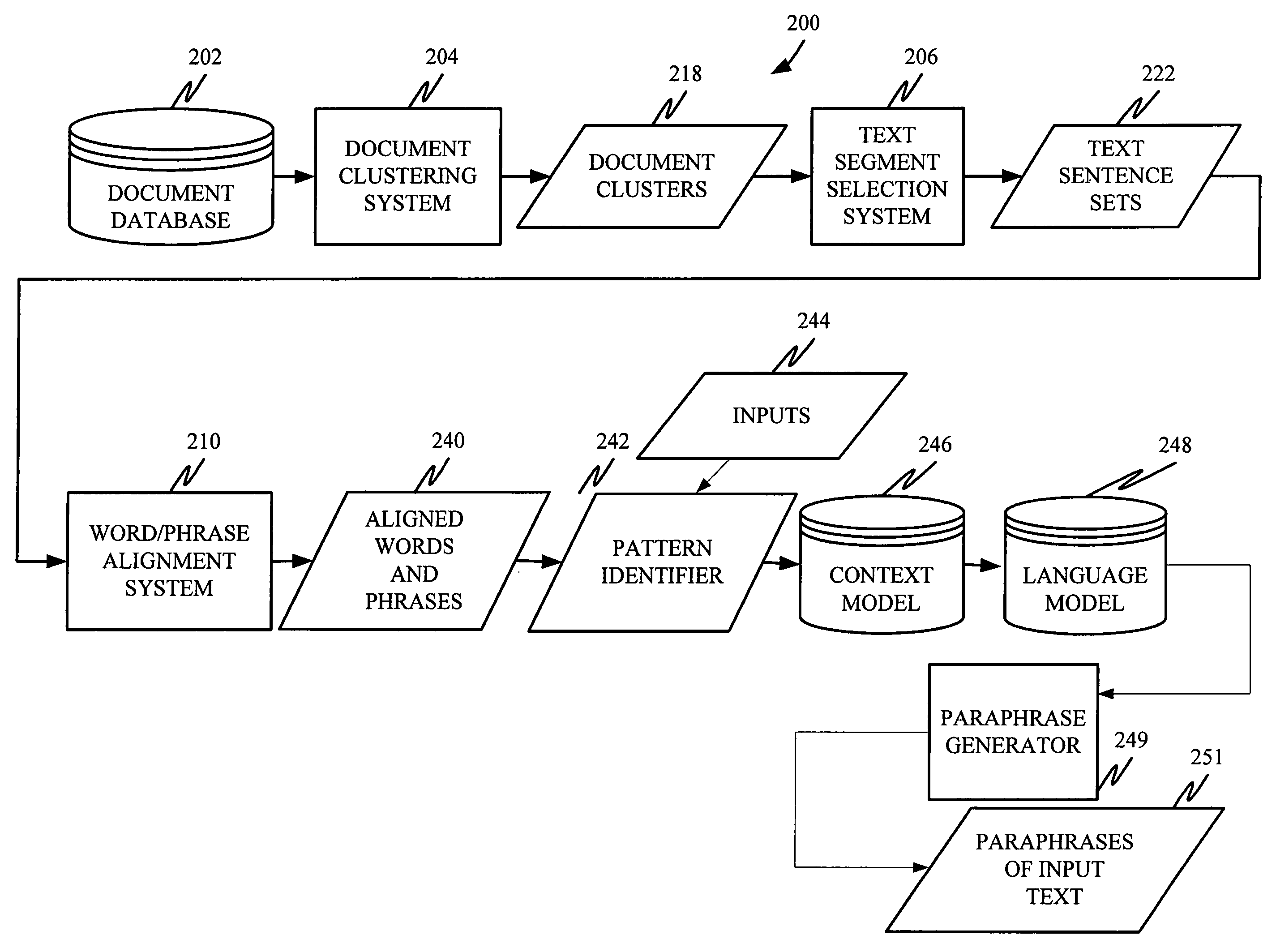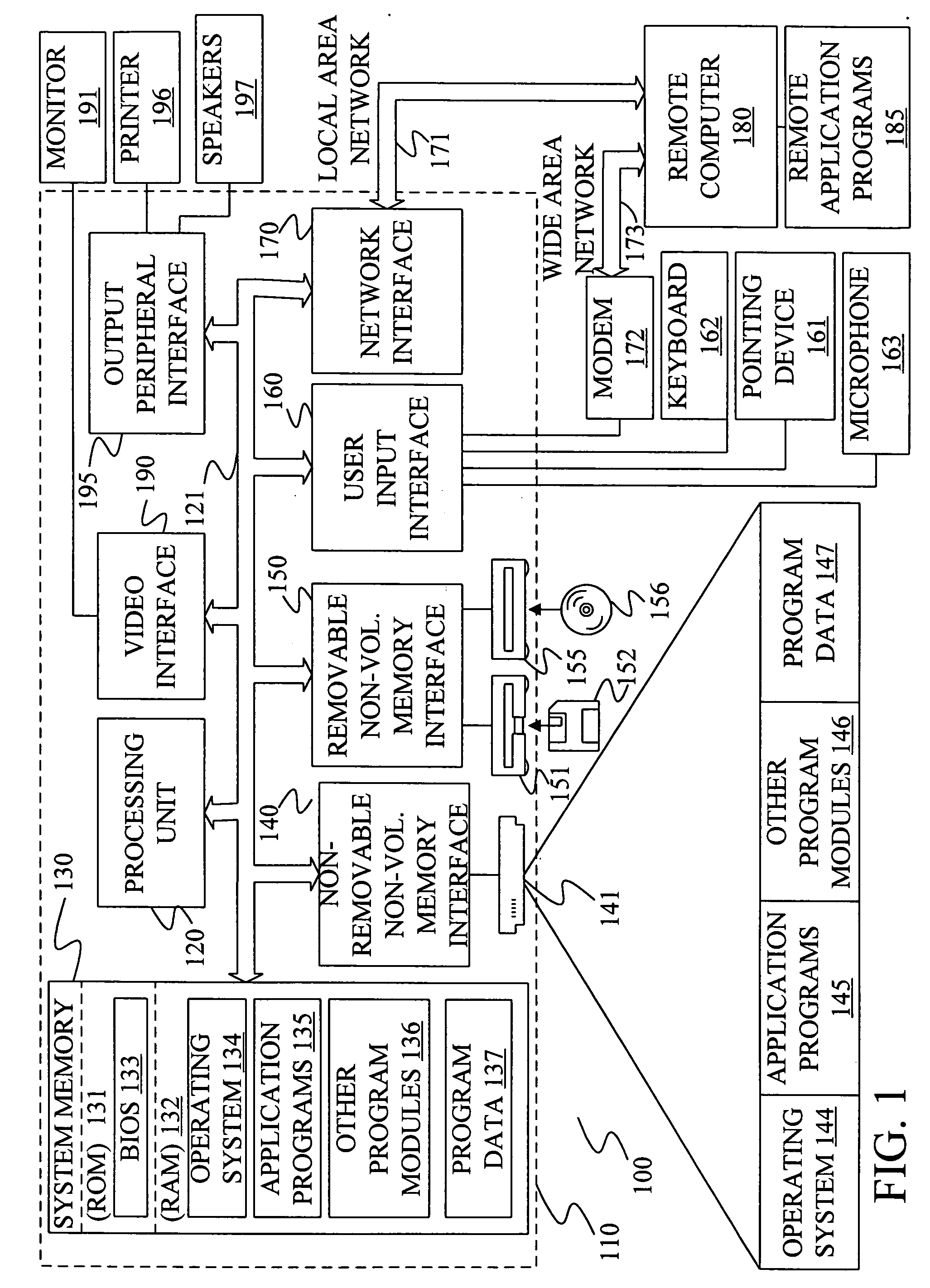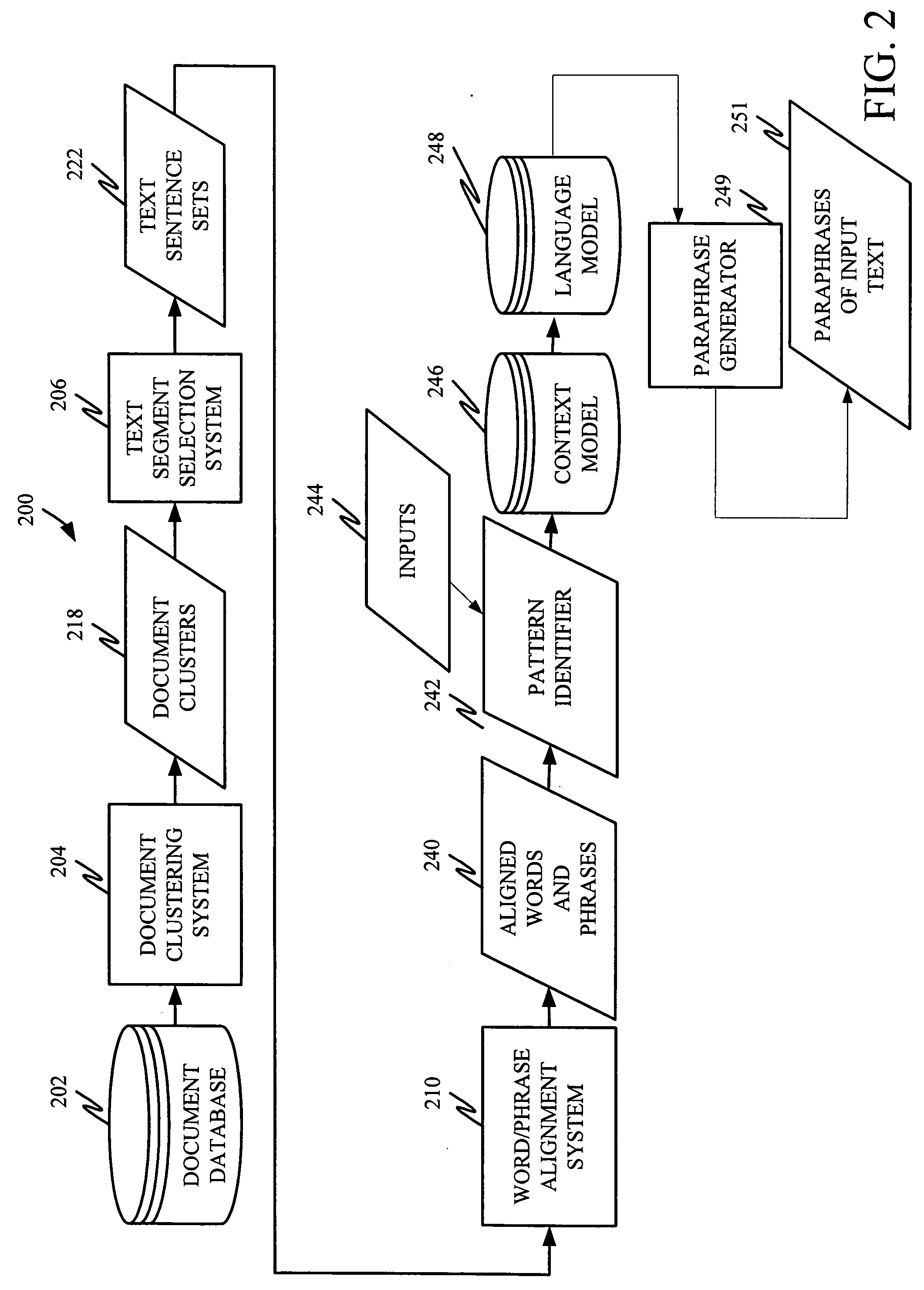Unsupervised learning of paraphrase/translation alternations and selective application thereof
a technology of paraphrase and translation alternation, applied in the field of unsupervised learning of paraphrase/translation alternation and selective application of it, can solve the problems of difficult recognition and generation of paraphrases, difficulty in returning good results for conventional search engines, and difficulty in recognizing and generating paraphrases
- Summary
- Abstract
- Description
- Claims
- Application Information
AI Technical Summary
Benefits of technology
Problems solved by technology
Method used
Image
Examples
Embodiment Construction
[0030] The present invention deals with methods for learning meaning-preserving text segment alternations from word-aligned, parallel text (either monolingual or bilingual). It should be noted that the term “text segment,” as it is used herein, is intended to refer to any contiguous chunk of text, from an entire document down to a single word. The present invention also deals with selectively applying such alternations so as to preserve meaning and / or avoid ambiguity. However, prior to discussing the present invention in greater detail, one illustrative environment in which the present invention can be used will be discussed.
[0031]FIG. 1 illustrates an example of a suitable computing system environment 100 on which the invention may be implemented. The computing system environment 100 is only one example of a suitable computing environment and is not intended to suggest any limitation as to the scope of use or functionality of the invention. Neither should the computing environment...
PUM
 Login to View More
Login to View More Abstract
Description
Claims
Application Information
 Login to View More
Login to View More - R&D
- Intellectual Property
- Life Sciences
- Materials
- Tech Scout
- Unparalleled Data Quality
- Higher Quality Content
- 60% Fewer Hallucinations
Browse by: Latest US Patents, China's latest patents, Technical Efficacy Thesaurus, Application Domain, Technology Topic, Popular Technical Reports.
© 2025 PatSnap. All rights reserved.Legal|Privacy policy|Modern Slavery Act Transparency Statement|Sitemap|About US| Contact US: help@patsnap.com



